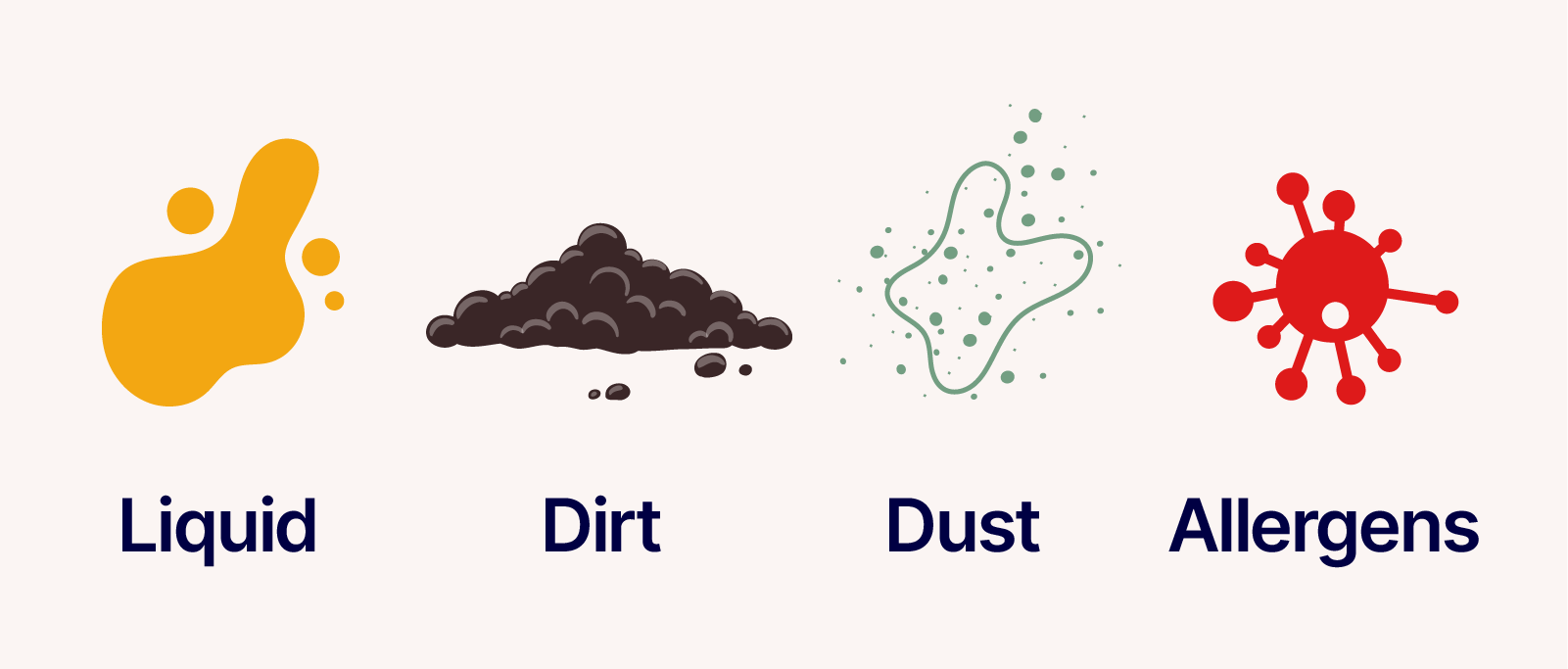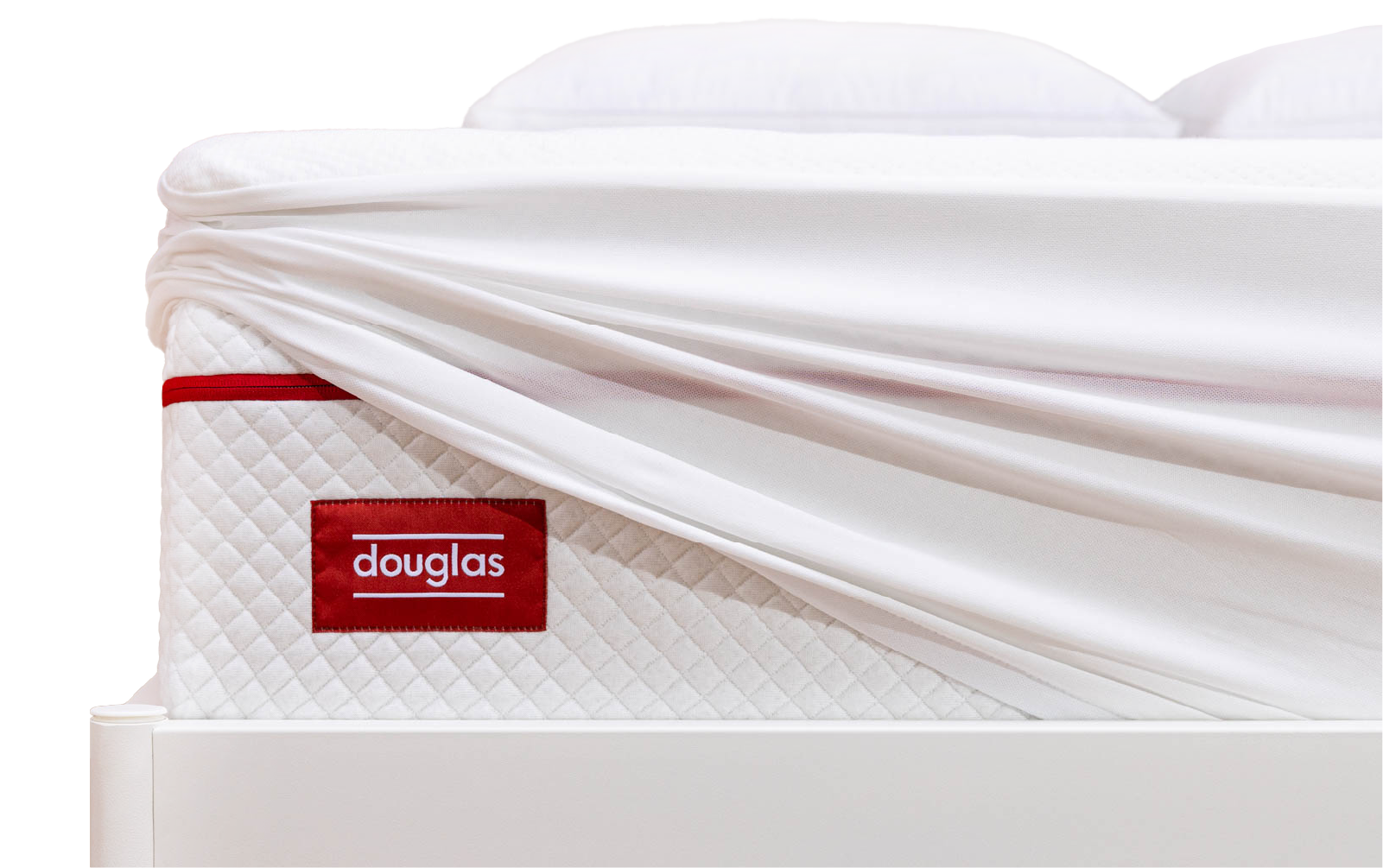How to Wash a Mattress Protector (2025)
Updated: October 21, 2025 | Published: July 2, 2024A clean sleep is a good night’s sleep. Your mattress protector plays an important part in making that happen. Just like your sheets should be washed regularly, your mattress protector needs occasional cleaning, too.
Whether you have allergies, you’ve just been sick, or there’s a stain you need to get rid of, knowing how to wash your mattress protector is simply a good idea. Get ready for a cleaner, healthier sleep—and extend the lifespan of your mattress.
Can You Wash a Mattress Protector?
Yes, there should always be a way to clean your mattress protector. Some mattress protectors are machine-washable, but even if yours isn’t, you should still be able to spot-clean it with the right tools.
You might be worried about damaging your mattress protector. Not to worry—with this guide, you can safely clean your mattress protector and keep it functional for a long time.
DISCLAIMER: Always check the product tag and/or manufacturer’s website for tips on safely cleaning your mattress protector.
How Do You Wash a Mattress Protector?
Machine-Washing a Mattress Protector
More and more mattress protectors are being manufactured using machine-washable materials, which makes washing them simple. If yours is machine washable, follow this step-by-step guide and learn how to wash your mattress protector in your washing machine.
- Remove your bed sheets and mattress protector from your bed. This may mean moving your bed’s foundation to access a side or corner that’s difficult to reach. Be careful when moving the foundation or mattress to remove the mattress protector, especially if you have an encasement-type protector that covers the entire mattress.
- Put your mattress protector in your washing machine by itself. You’ll get best results if you wash your mattress protector on its own, without adding any other items in the load. This will ensure the protector gets as clean as possible. Mattress protectors are also bulky, and a too-heavy load can be hard on your washing machine.
- Run a gentle cycle with cold water and a mild laundry detergent. Do this whether you’re washing the mattress protector by itself or in a laundry bag with other items. A warmer wash may damage your mattress protector’s elastic or any waterproof elements. Never use bleach when washing your mattress protector.
- Tumble-dry your mattress protector by itself at a low temperature. Excessive heat can damage your mattress protector’s elastic, waterproof element, or zipper, if it has one. Don’t use fabric softener sheets, which can contain chemicals that could damage your mattress protector. You can also hang your mattress protector out to dry outside, or in a well-ventilated spot in your home.
READ MORE: How often should you wash your sheets?
You can use stain remover when machine-washing your mattress protector if there’s a particularly stubborn stain you need to get rid of.
That said, not all stain removers are created equal. We recommend using an enzyme-based stain remover, since these don’t use potentially damaging chemicals to lift stains from fabrics.

Spot-Cleaning a Mattress Cover
Not every mattress protector can easily be removed from the mattress. Follow this step-by-step guide on how to spot-clean your mattress protector. (While you’re at it, learn how to clean a mattress, too.)
- Remove your bed sheets from your mattress. Take the flat and fitted sheets off the bed to expose the mattress protector. Be careful if you need to manually move your bed’s foundation or other furniture. Make sure your bedding isn’t lying on the floor where you might trip on it.
- Do a surface-level clean before spot-cleaning. Vacuum your mattress, paying attention to folds, crevices, and creases where dirt and debris may be gathered. You may also want to deodorize your mattress with baking soda.
- Apply a cleaning solution to any stains. Enzyme-based stain remover sprays are convenient and risk-free. However, some mattresses can be spot-cleaned with a solution of hydrogen peroxide and baking soda, or even dish soap and water. Apply your stain remover, let it sit for 10–15 minutes, and dab it up with a dry cloth.
- Let the mattress protector dry thoroughly. This will prevent damage from trapped moisture. Move your mattress to a well-ventilated area, or open your window to let air circulate. Give the mattress 6–8 hours to dry before putting your sheets back on.
Depending on what type of mattress you have, there may be restrictions to the way you can clean the mattress protector.
Avoid using water if your mattress contains metal coils or memory foam. Water can damage metal, and when applied to memory foam, it can also create a breeding ground for mould.

How Often to Wash a Mattress Protector
It’s a good idea to wash your mattress protector once every 2–4 weeks. That will keep your mattress protector clean and hygienic, and will help you sleep more comfortably at night.
If you’re a hot sleeper, consider washing your mattress protector more often—especially if you notice a lot of overnight sweating. Keeping your mattress protector clean will keep the material breathable and allow it to consistently wick away excess moisture while you sleep.
It’s best to clean your mattress protector immediately after any spills or stains. The longer a stain is allowed to linger, the more difficult it will be to remove.
You should also clean your mattress protector if you’ve just recently gotten over being sick. This will remove any leftover disease-causing contaminants.
Do You Need a Mattress Protector?
Yes, you should have a mattress protector. Like the name suggests, your mattress protector safeguards your mattress against wear and tear. It also helps to protect the mattress from liquid, dirt, dust, and allergens, keeping your bed clean and promoting overall health and wellbeing.

Accidents happen, especially if you share your bed with a partner, kids, or pets. And even for the tidiest sleepers, a mattress protector is a simple way to get more years out of your mattress.
When to Replace Your Mattress Protector
Most mattress protectors will last at least 1–2 years. You should replace your mattress protector if it has large stains that can’t be removed, if the material is torn or frayed, or if it no longer fits your mattress properly.
It’s possible to extend your mattress protector’s lifetime by cleaning it regularly or rotating it out with a spare mattress protector, like regular bed sheets.
Depending on your needs, one type of mattress protector may be better for you (and easier to clean) than another. There are three common types of mattress protectors:
- Fitted protectors, like the name suggests, fit over your mattress just like a fitted sheet.
- Elastic strap protectors sit on the surface of your mattress, similar to a mattress topper. These are secured to mattresses using elastic straps on each corner.
- Encased protectors wrap around the entire surface area of your mattress, and typically use a zipper.
Looking for a quality, easy-to-clean mattress protector? We recommend the Douglas mattress protector. With cooling bamboo fibres, breathable pores, and WaterShield™ technology to repel liquids, this mattress protector keeps you cool and dry as you sleep. And yes, it’s machine washable.
The Douglas mattress protector comes in all standard mattress sizes, including RV sizes. Best of all, it’s part of the free bedding bundle that comes with the purchase of any Douglas mattress—a bundle that also includes sheets, pillow(s), and pillow protector(s).
Our goal is to provide the information you need to find the mattress that’s right for you. Get started with some of our most popular mattress shopping resources:
- Best Mattress Guides: Best Mattress Canada, Best Mattress In a Box
- Reviews: Douglas Original, Logan & Cove Choice, Juno, Octave Vista
- Comparisons: Douglas vs Endy, Douglas vs Casper
We use independent, third-party engineering firms (commissioned by us) with the APEGA stamp of approval to conduct mattress testing on our behalf, using publicly available data. We review and test all mattresses on 40+ criteria we think are important to you, including price, country of manufacture, sleep trial, warranty, features, materials used, motion isolation and edge support ratings, customer satisfaction reviews, returns, and refunds.

